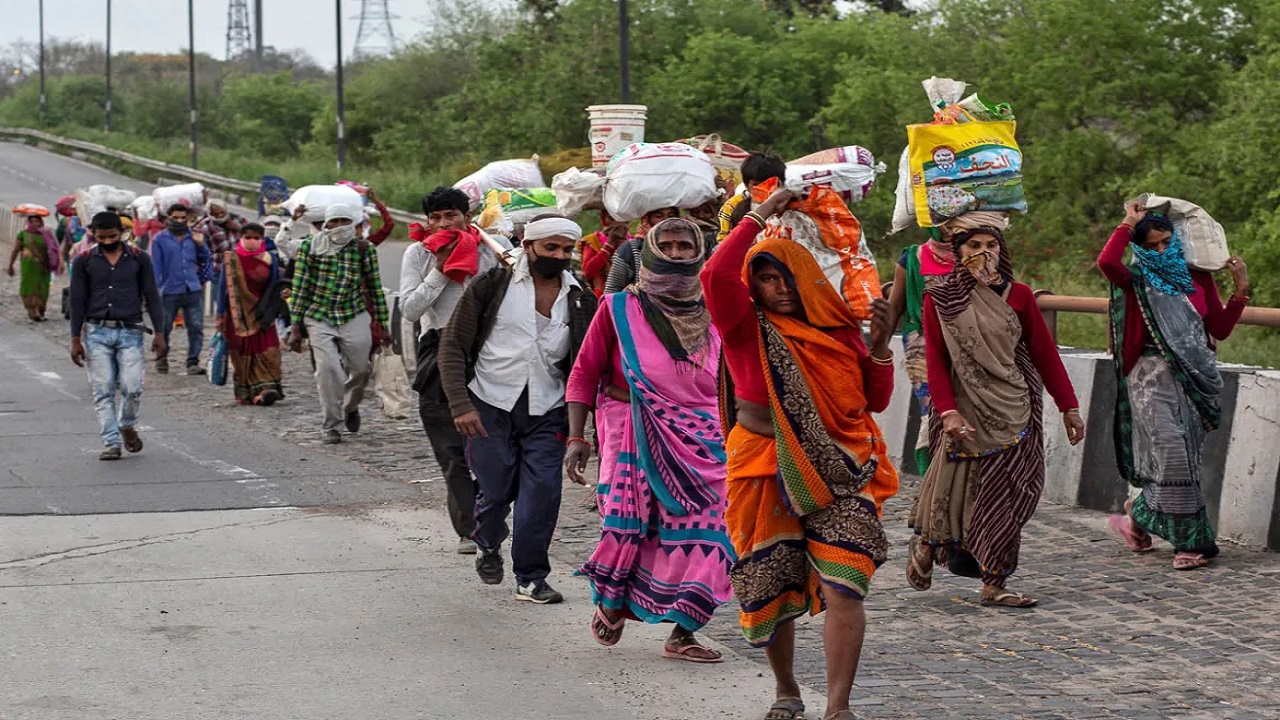Migrant Workers Matter: Transformative Potential of the e-Shram Portal
Context :
The Ministry of Labour and Employment (MoL&E) in India recently declared the e-Shram portal as the largest global database of unorganised workers, with over 300 million workers registered. Launched in May 2021, the portal was created in response to the Supreme Court's directive during the COVID-19 pandemic. It aimed to address the distressing plight of migrant workers by creating a unified national database.
However, despite its ambitious vision, the portal's implementation has faced challenges, highlighting the urgent need for robust measures to ensure the social protection of India's vulnerable unorganised workforce.
Historical Context: The Need for Worker Databases
Efforts to create databases for unorganised workers have been ongoing for decades but lacked effective implementation.
- The Interstate Migrant Workmen Act (1979): Mandated detailed records of migrant workers but failed in enforcement.
- The National Commission for Enterprises in the Unorganised Sector (2007): Advocated universal worker registration.
- The Unorganised Workers’ Social Security Act (2008): Proposed identity cards for workers but saw limited adoption.
These earlier attempts failed to gain traction, leaving millions of workers invisible to policymakers and excluded from social protections. The e-Shram portal represents a significant step toward rectifying this historical oversight.
Understanding Migrant Workers’ Vulnerabilities
1. Socio-Economic Exclusion
- Many workers are employed informally in sectors like construction, agriculture, and domestic work.
- Lack of formal contracts results in low wages, unsafe environments, and job insecurity.
- Absence of unionisation limits their bargaining power, leaving them vulnerable to exploitation.
2. Political Disenfranchisement
- Migrant workers often cannot register as voters in their place of work.
- Their names are frequently missing from electoral rolls in their home states.
- This political alienation deprives them of a voice in decisions that affect their lives.
3. Limited Access to Social Services
- Welfare schemes lack portability across states, excluding migrant workers from key benefits.
- Migrant families often lose access to ration cards and healthcare when they relocate.
- Children face disruptions in education due to frequent moves, perpetuating poverty cycles.
4. Stigma and Discrimination
- Migrant workers are often viewed as outsiders, facing social exclusion and hostility.
- Women migrants are particularly vulnerable to harassment and exploitation in both workplaces and living conditions.
Persistent Challenges
Despite the potential of the e-Shram portal, significant hurdles remain:
1. Documentation Barriers
- Many workers lack essential identification documents such as Aadhaar or voter IDs.
- Issues like unlinked mobile numbers or temporary housing complicate registration.
2. Technological Barriers
- Digital illiteracy among unorganised workers, especially in rural areas, hinders access.
- Women workers often have limited access to smartphones and internet connectivity.
3. Limited Portability of Benefits
- Many welfare schemes remain tied to the worker's home state.
- Initiatives like One Nation One Ration Card (ONORC) address this, but gaps persist in other entitlements like housing and healthcare.
4. Fragmented Social Security Systems
- Multiple welfare schemes operate under different ministries, leading to inefficiencies.
- Key programs like PM Matru Vandana Yojana remain unlinked to the e-Shram portal, limiting coverage.
The Path Forward
To maximise its impact, the e-Shram portal must evolve into a comprehensive empowerment platform.
- Enhance Data Granularity: Disaggregate migration data to improve policy interventions.
- Ensure Portability of Benefits: Seamlessly integrate welfare schemes across states.
- Integrate Social Security Systems: Link all major welfare programs under the portal.
- Empower Workers Through Development: Focus on education, skill-building, and healthcare alongside employment benefits.
- Leverage Technology Effectively: Address the digital divide by providing assistance for registration and access.
Policymakers must view migrant workers as economic assets rather than burdens, aligning with the 2030 Agenda for Sustainable Development, which emphasises well-managed migration for growth.
Conclusion
The unorganised workforce is indispensable to India's economy, yet they remain on the margins of social and economic inclusion. While the e-Shram portal is a commendable initiative, its success hinges on addressing systemic barriers and creating inclusive policies that prioritise equity and sustainability.
Achieving the vision of "Viksit Bharat" (Developed India) by 2047 requires transforming the portal into a cornerstone of social protection, ensuring that no worker is left behind. The e-Shram portal is not just a database—it is a gateway to dignity, equity, and empowerment for millions.


_(13).jpg)

Comments (0)